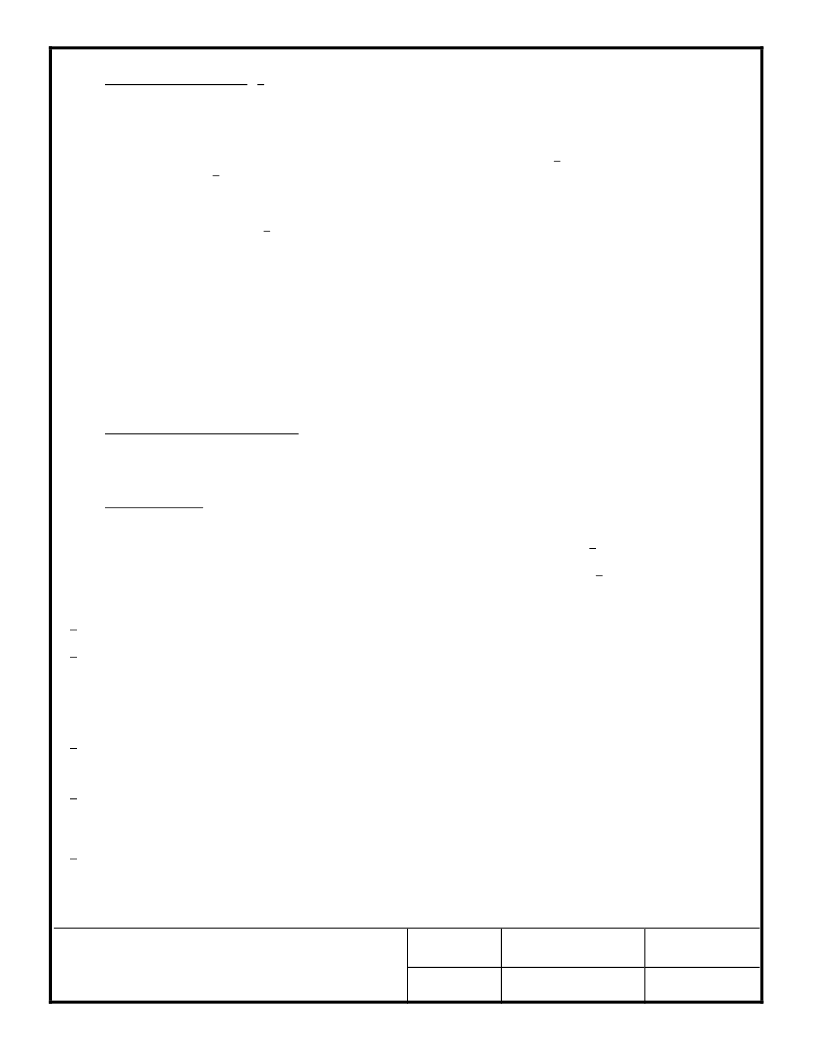- 您現(xiàn)在的位置:買賣IC網(wǎng) > PDF目錄371621 > 5962L9950401VCA Operational Amplifier PDF資料下載
參數(shù)資料
| 型號: | 5962L9950401VCA |
| 英文描述: | Operational Amplifier |
| 中文描述: | 運算放大器 |
| 文件頁數(shù): | 3/17頁 |
| 文件大?。?/td> | 78K |
| 代理商: | 5962L9950401VCA |

1.3 Absolute maximum ratings. 1/
Supply voltage range (+V
CC
)
..................................................................... 32 V dc or
±
16 V dc
Input voltage range ..................................................................................... -0.3 V dc to +32 V dc
Differential input voltage .............................................................................. 32 V dc
Input current (V
IN
<
-0.3 V dc) ..................................................................... 50 mA 2/
Power dissipation: 3/
Case C ..................................................................................................... 1260 mW
Cases D and Z ......................................................................................... 700 mW
Storage temperature range ......................................................................... -65
°
C to +150
°
C
Output short-circuit to GND: 4/
(One amplifier, +V
CC
≤
15 V dc and T
A
= 25
°
C) ..................................... Continuous
Lead temperature (soldering, 10 seconds) ................................................. 260
°
C
Maximum junction temperature (T
J
) ............................................................ 150
°
C
Thermal resistance, junction-to-case (
θ
JC
):
Case C ..................................................................................................... 19
°
C/W
Cases D and Z ......................................................................................... 18
°
C/W
Thermal resistance, junction-to-ambient (
θ
JA
):
Case C ..................................................................................................... 103
°
C/W (still air)
51
°
C/W (500 LF/min air flow)
Cases D and Z ......................................................................................... 176
°
C/W (still air)
116
°
C/W (500 LF/min air flow)
1.4 Recommended operating conditions.
Supply voltage range ..................................................................................
±
5 V to
±
30 V
Ambient operating temperature range (T
A
) ................................................. -55
°
C to +125
°
C
1.5 Radiation features.
Maximum total dose available (dose rate = 50 – 300 rads(Si) / s)
RHA designator L .................................................................................... 50 Krads (Si) 5/
Maximum total dose available (dose rate = 50 – 300 rads(Si) / s)
RHA designator R ................................................................................... 100 Krads (Si) 5/
______
1/ Stresses above the absolute maximum rating may cause permanent damage to the device. Extended operation at the
maximum levels may degrade performance and affect reliability.
2/ This input current will only exist when the voltage at any of the input leads is driven negative. It is due to the collector-base
junction of the input PNP transistors becoming forward biased and thereby acting as input diode clamps. In addition to this
diode action, there is also lateral NPN parasitic transistor action on the IC chip. This transistor action can cause the output
voltages of the operational amplifiers to go to the +V
CC
voltage level (or to ground for a large overdrive) for the time
duration that an input is driven negative. This is not destructive and normal output states will re-establish when the input
voltage, which was negative, again returns to a value greater than –0.3 V dc at 25
°
C.
3/ The maximum power dissipation must be derated at elevated temperatures and is dictated by T
J
,
θ
JA
, and T
A
. The
maximum allowable power dissipation at any temperature is P
D
= (T
J
– T
A
) /
θ
JA
or the number given in 1.3 herein,
whichever is lower.
4/ Short circuits from the output to +V
CC
can cause excessive heating and eventual destruction. When considering short
circuits to ground, the maximum output current is approximately 40 mA independent of the magnitude of +V
CC
. At values
of supply voltage in excess of +15 V dc, continuous short-circuits can exceed the power dissipation ratings and cause
eventual destruction. Destructive dissipation can result from simultaneous shorts on all amplifiers.
5/ These parts may be dose rate sensitive in a space environment and may demonstrate enhanced low dose rate effects.
Radiation end point limits for the noted parameters are guaranteed only for the conditions specified in MIL-STD-883,
test method 1019, condition A.
STANDARD
MICROCIRCUIT DRAWING
DEFENSE SUPPLY CENTER COLUMBUS
COLUMBUS, OHIO 43216-5000
SIZE
A
5962-99504
REVISION LEVEL
C
SHEET
3
DSCC FORM 2234
APR 97
相關PDF資料 |
PDF描述 |
|---|---|
| 5962L9950401VDA | Dual PCI Express, Hot-Plug Controller |
| 5962L9950401VZA | Operational Amplifier |
| 59802 | 5-Pin µP Supervisory Circuits with Watchdog and Manual Reset |
| 59803-1 | EINSETZWERKZEUG MTA 2.54MM |
| 59804-1 | 5-Pin µP Supervisory Circuits with Watchdog and Manual Reset |
相關代理商/技術參數(shù) |
參數(shù)描述 |
|---|---|
| 5962L9951501VGA | 功能描述:運算放大器 - 運放 Op Amp RoHS:否 制造商:STMicroelectronics 通道數(shù)量:4 共模抑制比(最小值):63 dB 輸入補償電壓:1 mV 輸入偏流(最大值):10 pA 工作電源電壓:2.7 V to 5.5 V 安裝風格:SMD/SMT 封裝 / 箱體:QFN-16 轉(zhuǎn)換速度:0.89 V/us 關閉:No 輸出電流:55 mA 最大工作溫度:+ 125 C 封裝:Reel |
| 5962L9951501VHA | 制造商:Texas Instruments 功能描述:OP Amp Single GP 制造商:Texas Instruments 功能描述:OP AMP, GENERAL PURPOSE - Rail/Tube 制造商:Texas Instruments 功能描述:Op Amp |
| 5962L9951501VPA | 功能描述:運算放大器 - 運放 Op Amp RoHS:否 制造商:STMicroelectronics 通道數(shù)量:4 共模抑制比(最小值):63 dB 輸入補償電壓:1 mV 輸入偏流(最大值):10 pA 工作電源電壓:2.7 V to 5.5 V 安裝風格:SMD/SMT 封裝 / 箱體:QFN-16 轉(zhuǎn)換速度:0.89 V/us 關閉:No 輸出電流:55 mA 最大工作溫度:+ 125 C 封裝:Reel |
| 5962P9951701VXA | 功能描述:線性穩(wěn)壓器 - 標準 RoHS:否 制造商:STMicroelectronics 輸出類型: 極性: 輸出電壓:1.8 V 輸出電流:150 mA 負載調(diào)節(jié): 最大輸入電壓:5.5 V 線路調(diào)整率: 最大工作溫度:+ 125 C 安裝風格:SMD/SMT 封裝 / 箱體:SOT-323-5L |
| 5962P9951708VXA | 制造商:Texas Instruments 功能描述:5962P9951708VXA - Rail/Tube |
發(fā)布緊急采購,3分鐘左右您將得到回復。